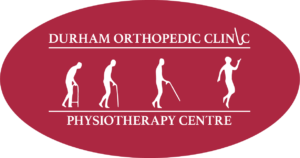Whether you’re a professional athlete or someone who enjoys recreational sports, incorporating proper warm-up and cool-down routines into your regimen is crucial. These practices are often overlooked but play a vital role in optimizing performance, preventing injuries, and aiding recovery.
Why Warm-Up Matters
A proper warm-up is essential for preparing your body for the physical demands of sports. Here’s why:
- Increased Blood Flow and Oxygen Delivery: Warming up gradually increases your heart rate, which in turn boosts blood flow to your muscles. This ensures that more oxygen and nutrients are delivered to the working muscles, preparing them for the upcoming activity.
- Enhanced Flexibility and Range of Motion: Dynamic stretching during warm-up helps to improve your flexibility and range of motion. This reduces the risk of strains and sprains by allowing your joints and muscles to move more freely.
- Improved Muscle Activation: A warm-up helps activate the muscles you’ll be using during your sport. By engaging these muscles beforehand, you enhance their responsiveness, which can lead to better performance and a reduced risk of injury.
- Mental Preparation: Warm-up routines also help you mentally prepare for the physical exertion ahead. It gives you time to focus, clear your mind, and get into the right mindset, which is just as important as physical readiness.
Components of an Effective Warm-Up
A well-rounded warm-up should include the following components:
- General Warm-Up: Begin with 5-10 minutes of light aerobic activity such as jogging, cycling, or skipping. This elevates your heart rate and gets your blood flowing.
- Dynamic Stretching: Incorporate dynamic stretches that mimic the movements you’ll be doing in your sport. For example, leg swings, arm circles, and lunges are excellent for loosening up key muscle groups.
- Sport-Specific Drills: Engage in sport-specific drills that gradually increase in intensity. If you’re a soccer player, for example, you might do some light ball-handling drills or short sprints.
The Importance of Cool-Down
Just as warming up is crucial for preparing your body, cooling down is essential for aiding recovery and reducing the risk of injury. Here’s why:
- Gradual Reduction of Heart Rate: A proper cool-down helps to gradually bring your heart rate back to its resting level. This prevents blood from pooling in your extremities, which can lead to dizziness or fainting.
- Removal of Lactic Acid: During intense exercise, lactic acid builds up in your muscles, leading to soreness and fatigue. Cooling down promotes circulation, helping to remove lactic acid and reduce muscle stiffness.
- Flexibility Maintenance: Post-exercise, your muscles are warm and pliable, making it an ideal time to engage in static stretching. This helps maintain flexibility and reduces the risk of muscle tightness.
- Mental Relaxation: Cooling down provides an opportunity to mentally unwind and reflect on your performance. This can help reduce stress and promote a sense of well-being.
Components of an Effective Cool-Down
A cool-down routine should include:
- Light Aerobic Activity: Start with 5-10 minutes of light activity such as walking or jogging at a slow pace to gradually lower your heart rate.
- Static Stretching: Engage in static stretches that target the major muscle groups you used during your sport. Hold each stretch for 20-30 seconds to enhance flexibility and reduce muscle tension.
- Hydration and Nutrition: Rehydrate and refuel your body with water and a snack rich in carbohydrates and protein. This aids in recovery and replenishes the energy stores depleted during exercise.
Incorporating proper warm-up and cool-down routines into your sports activities is a small investment of time that can yield significant benefits. Not only do these practices help enhance your performance, but they also play a crucial role in preventing injuries and promoting recovery. Whether you’re an elite athlete or a weekend warrior, never underestimate the importance of warming up before activity and cooling down afterward.
If you have a sports injury contact a physiotherapist at the Durham Orthopedic and Sports Injury Clinic at 905-428-7800, to develop a personalized treatment plan tailored to your needs. With the right approach, you can find relief from jaw pain and improve your quality of life.





